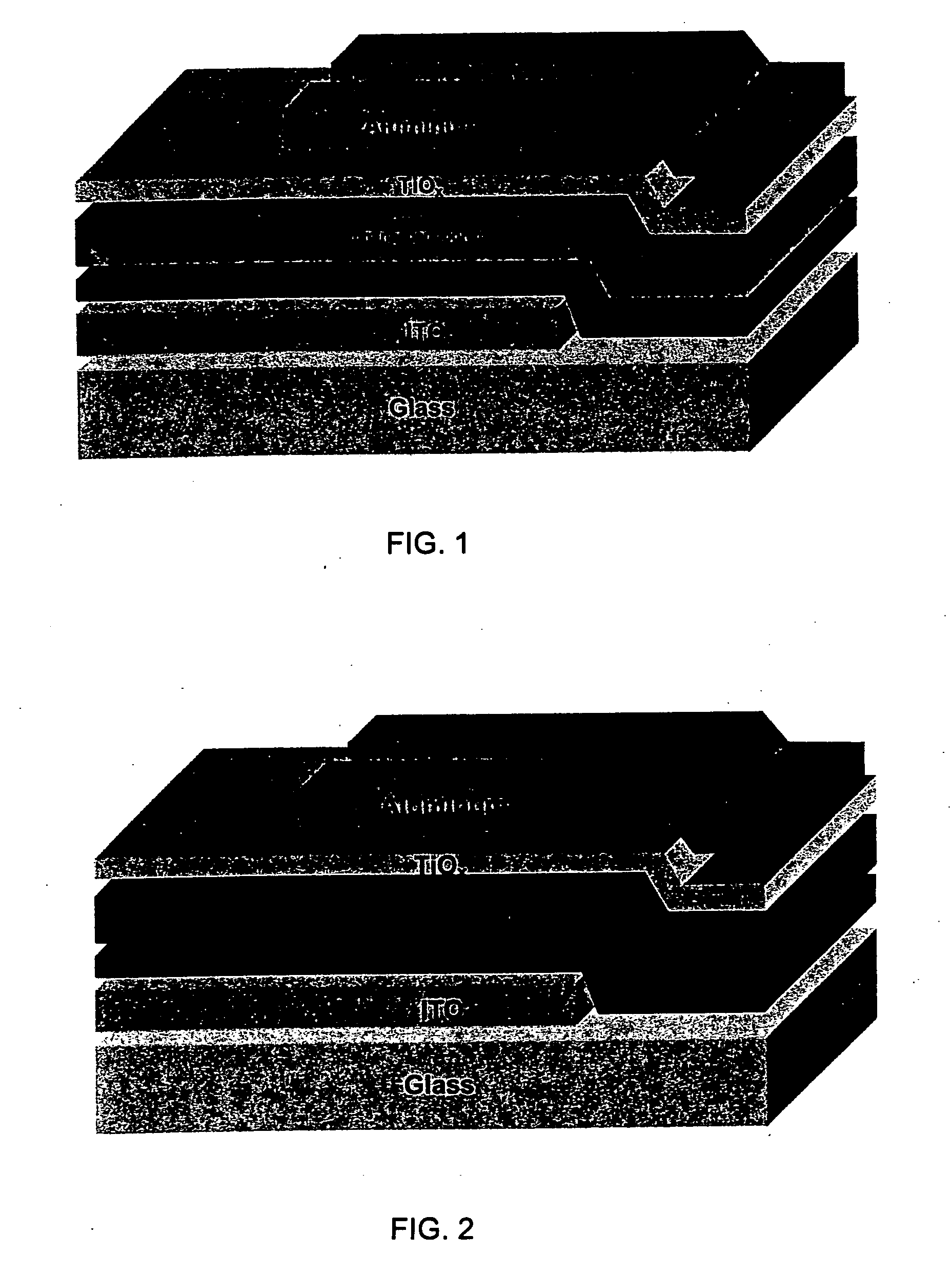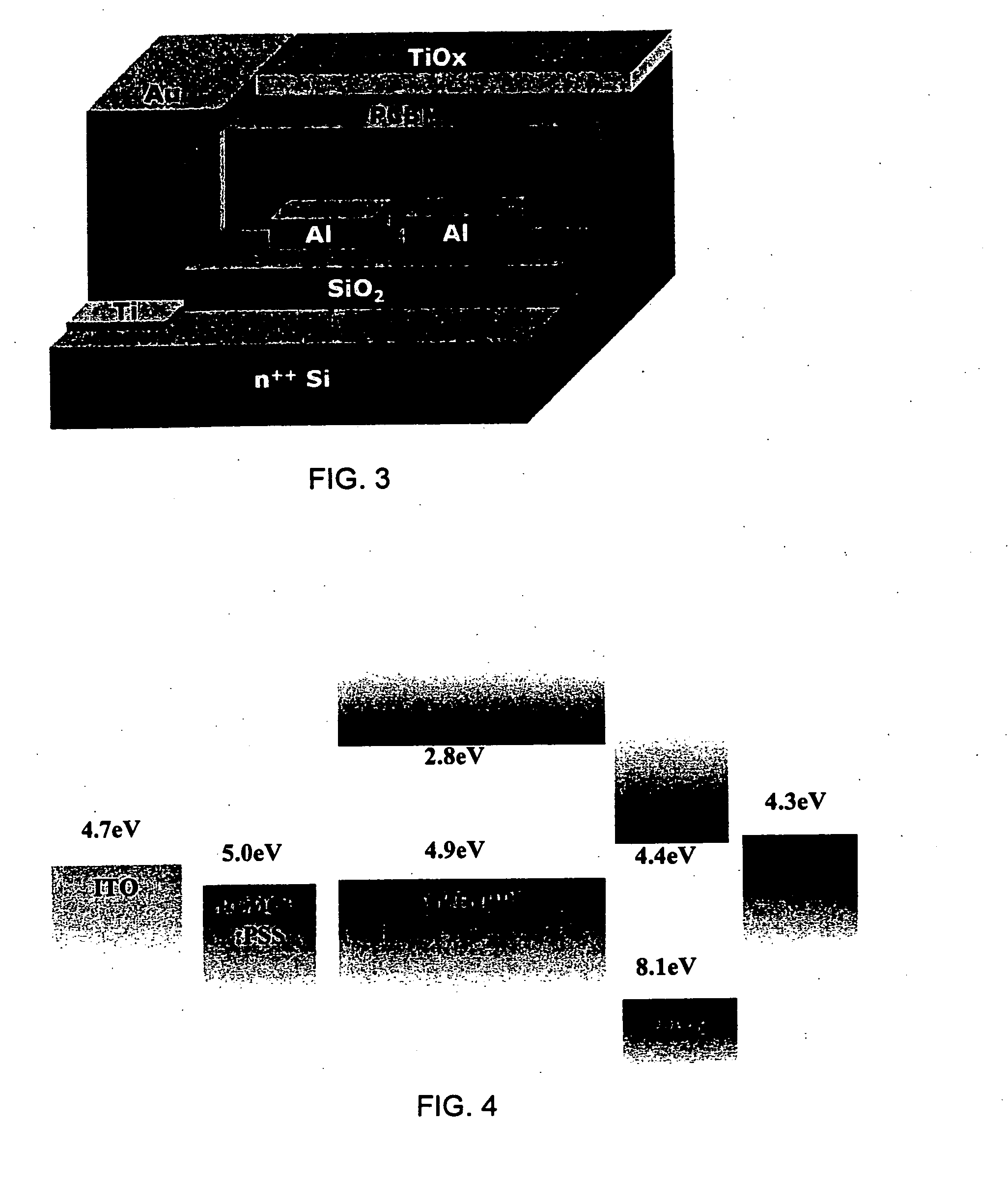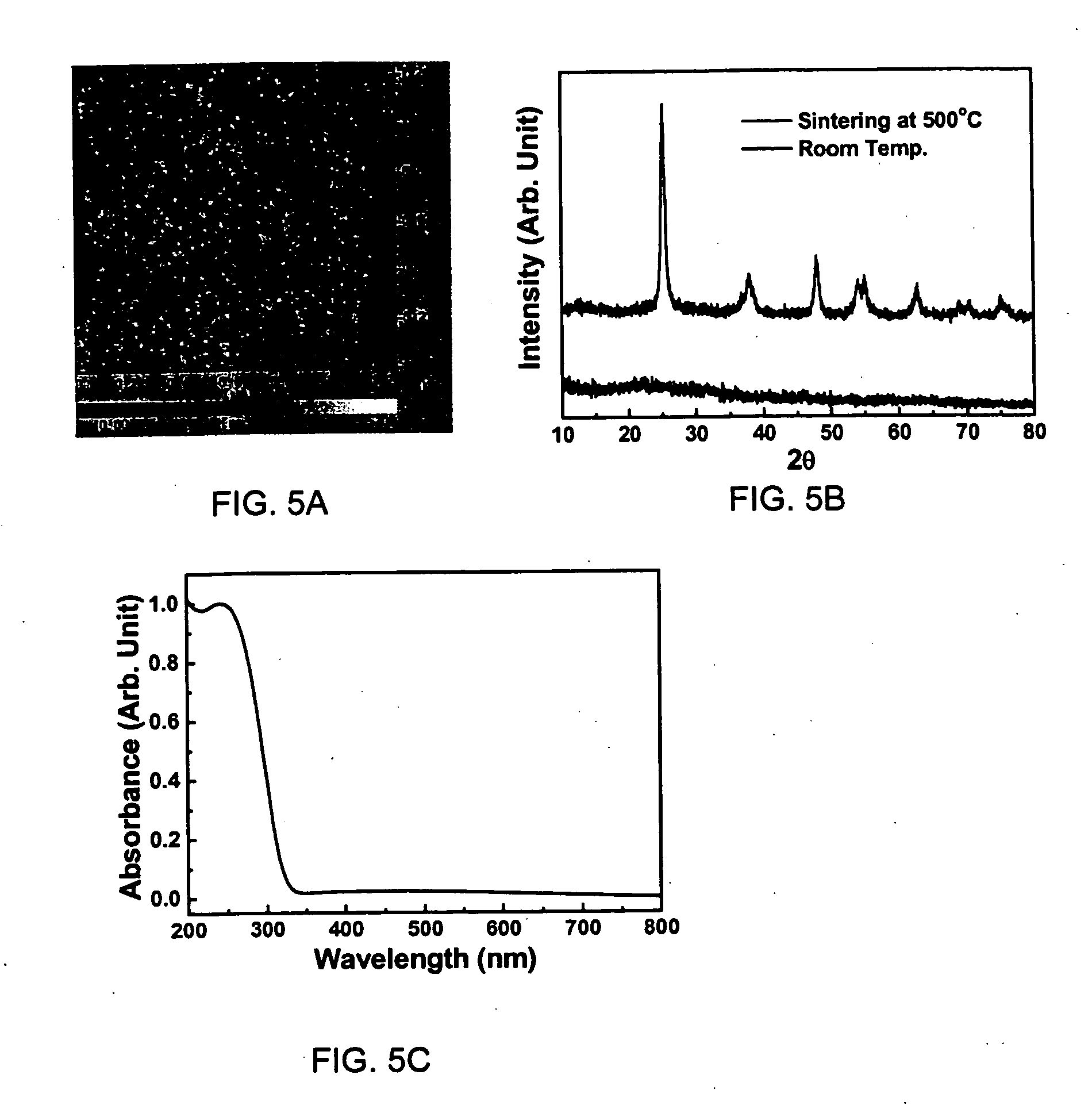Passivating layer for photovoltaic cells
a photovoltaic cell and passivating layer technology, applied in the field of polymer-based electronic devices, can solve the problems of short lifetime of polymer-based devices, increased thickness, and loss of flexibility, and achieve the effect of enhancing the lifetime of photovoltaic cells
- Summary
- Abstract
- Description
- Claims
- Application Information
AI Technical Summary
Benefits of technology
Problems solved by technology
Method used
Image
Examples
example 1
Solution-Processed Titanium Oxides
[0157] The TiOx material was prepared using a novel sol-gel procedure as follows: 10 mL titanium(IV) isopropoxide (Ti[OCH(CH3)2]4, 99.999%, Sigma-Aldrich Corporation) was mixed with 50 mL 2-methoxyethanol (CH3OCH2CH20H, 99.9+%, Sigma-Aldrich) and 5 mL ethanolamine (H2NCH2CH2OH, 99+%, Sigma-Aldrich) in a three-necked flask equipped with a condenser, thermometer, and an argon gas inlet / outlet respectively. The mixed solution was then heated to 80° C. for 2 hours in a silicon oil bath under magnetic stirring, followed by heating to 120° C. for 1 hour. The two-step heating (at 80° C. and 120° C.) was then repeated. A TiOx precursor solution was prepared in isopropyl alcohol.
[0158] Dense TiOx layers were prepared from the TiOx precursor solution. The precursor solution was spin-cast in the air on top of a semiconducting polymer layer comprising P3HT with thicknesses ranging from 20 to 40 nm. Subsequently, the films were heated at 80° C. for 10 minutes ...
example 2
TiOx as an Oxygen Barrier and an Oxygen Scavenging Layer
[0161] Comparison studies of photoluminescence (PL) stability of polyfluorene (PF) with and without a TiOx layer were carried out to confirm the oxygen barrier and scavenging properties of the TiOx layer. Four films with the following structures were prepared by spin-casting: glass / PF, glass / TiOx / PF, glass / PF / TiOx, and glass / TiOx / PF / TiOx. The films Were then heated for 15 hours at 150° C. in the air.
[0162] It is known that the PF type materials degrade with an appearance of a long-wavelength emission around 500-600 nm after heating in the air. This green emission peak arises by energy transfer from singlet excitons on the PF chains to keto-defect sites that form by reaction with oxygen present in the luminescent polymer. Therefore, it is expected that the four different samples would exhibit different peak intensities for the long wavelength emission because of the shielding and oxygen scavenging effect of the TiOx layer.
[01...
example 3
Polymer Diodes and Polymer Light-Emitting Diodes with Enhanced Performance as a Result of a Titanium Oxide (TiOx) Layer
[0166] Polymer diodes and LEDs were fabricated in the sandwich structure: ITO / PEDOT:PSS / Polymer / TiOx / Al. The semiconducting polymer used in this example was MEH-PPV available from Organic Vision Inc. The thickness of the MEH-PPV layer was approximately 100 nm. The TiOx precursor solution (1 wt %) was spin-cast (6000 rpm) onto the semiconducting polymer layer with a thickness around 20 nm, and heated at 80° C. for 10 minutes in the air. During this process the precursor converted to TiOx. Subsequently the devices were pumped down in vacuum (−6 Torr), and then Al electrode with a thickness around 150 nm was deposited. The deposited Al electrode area defined an active area of the device as 16 mm2. The current density-voltage-luminance characteristics were measured using a Keithley 236 source measurement unit along with a calibrated silicon photodiode inside a glove bo...
PUM
| Property | Measurement | Unit |
|---|---|---|
| Temperature | aaaaa | aaaaa |
| Temperature | aaaaa | aaaaa |
| Temperature | aaaaa | aaaaa |
Abstract
Description
Claims
Application Information
 Login to View More
Login to View More - R&D
- Intellectual Property
- Life Sciences
- Materials
- Tech Scout
- Unparalleled Data Quality
- Higher Quality Content
- 60% Fewer Hallucinations
Browse by: Latest US Patents, China's latest patents, Technical Efficacy Thesaurus, Application Domain, Technology Topic, Popular Technical Reports.
© 2025 PatSnap. All rights reserved.Legal|Privacy policy|Modern Slavery Act Transparency Statement|Sitemap|About US| Contact US: help@patsnap.com



